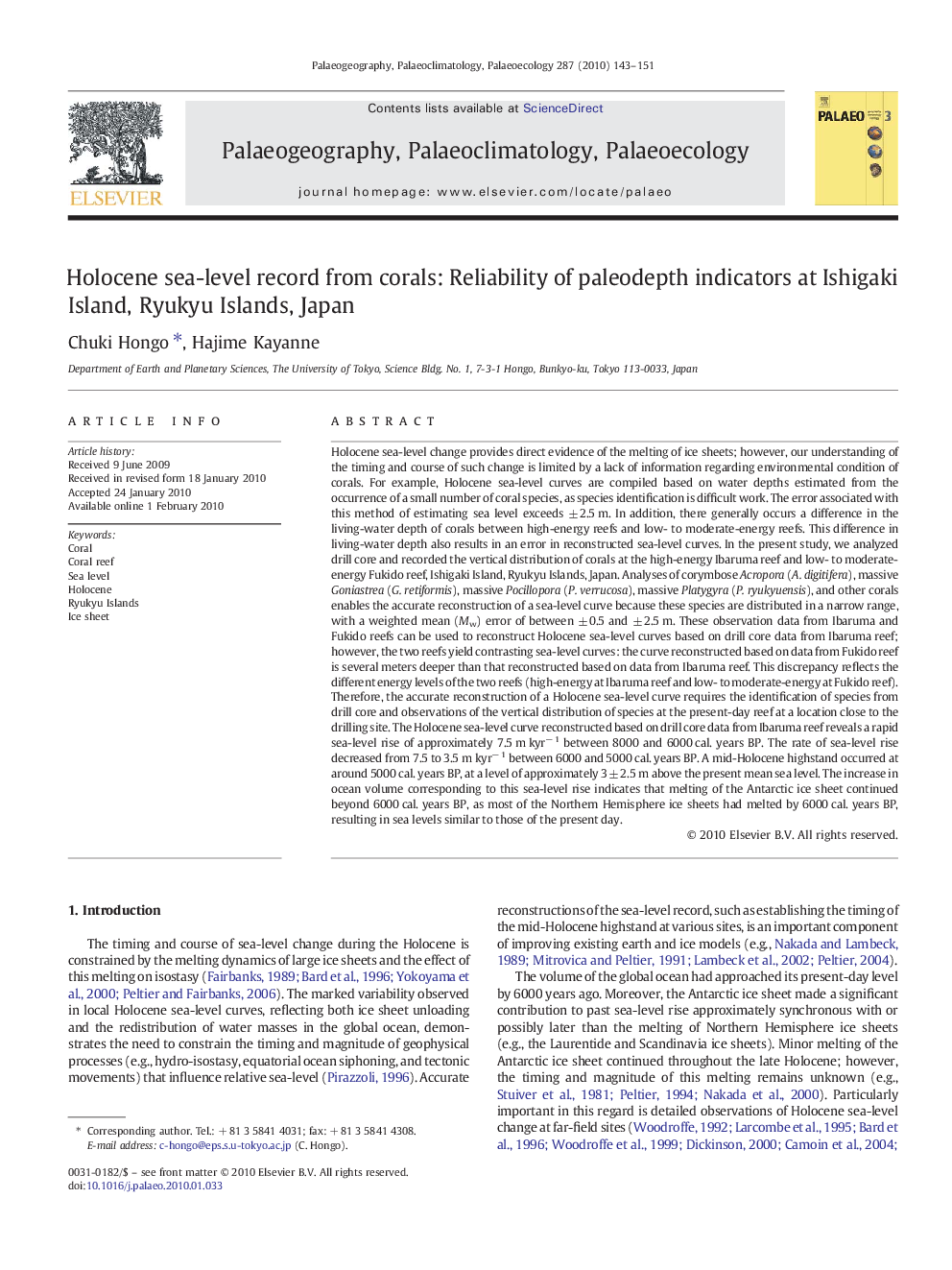| کد مقاله | کد نشریه | سال انتشار | مقاله انگلیسی | نسخه تمام متن |
|---|---|---|---|---|
| 4467841 | 1622284 | 2010 | 9 صفحه PDF | دانلود رایگان |

Holocene sea-level change provides direct evidence of the melting of ice sheets; however, our understanding of the timing and course of such change is limited by a lack of information regarding environmental condition of corals. For example, Holocene sea-level curves are compiled based on water depths estimated from the occurrence of a small number of coral species, as species identification is difficult work. The error associated with this method of estimating sea level exceeds ± 2.5 m. In addition, there generally occurs a difference in the living-water depth of corals between high-energy reefs and low- to moderate-energy reefs. This difference in living-water depth also results in an error in reconstructed sea-level curves. In the present study, we analyzed drill core and recorded the vertical distribution of corals at the high-energy Ibaruma reef and low- to moderate-energy Fukido reef, Ishigaki Island, Ryukyu Islands, Japan. Analyses of corymbose Acropora (A. digitifera), massive Goniastrea (G. retiformis), massive Pocillopora (P. verrucosa), massive Platygyra (P. ryukyuensis), and other corals enables the accurate reconstruction of a sea-level curve because these species are distributed in a narrow range, with a weighted mean (Mw) error of between ± 0.5 and ± 2.5 m. These observation data from Ibaruma and Fukido reefs can be used to reconstruct Holocene sea-level curves based on drill core data from Ibaruma reef; however, the two reefs yield contrasting sea-level curves: the curve reconstructed based on data from Fukido reef is several meters deeper than that reconstructed based on data from Ibaruma reef. This discrepancy reflects the different energy levels of the two reefs (high-energy at Ibaruma reef and low- to moderate-energy at Fukido reef). Therefore, the accurate reconstruction of a Holocene sea-level curve requires the identification of species from drill core and observations of the vertical distribution of species at the present-day reef at a location close to the drilling site. The Holocene sea-level curve reconstructed based on drill core data from Ibaruma reef reveals a rapid sea-level rise of approximately 7.5 m kyr− 1 between 8000 and 6000 cal. years BP. The rate of sea-level rise decreased from 7.5 to 3.5 m kyr− 1 between 6000 and 5000 cal. years BP. A mid-Holocene highstand occurred at around 5000 cal. years BP, at a level of approximately 3 ± 2.5 m above the present mean sea level. The increase in ocean volume corresponding to this sea-level rise indicates that melting of the Antarctic ice sheet continued beyond 6000 cal. years BP, as most of the Northern Hemisphere ice sheets had melted by 6000 cal. years BP, resulting in sea levels similar to those of the present day.
Journal: Palaeogeography, Palaeoclimatology, Palaeoecology - Volume 287, Issues 1–4, 1 March 2010, Pages 143–151